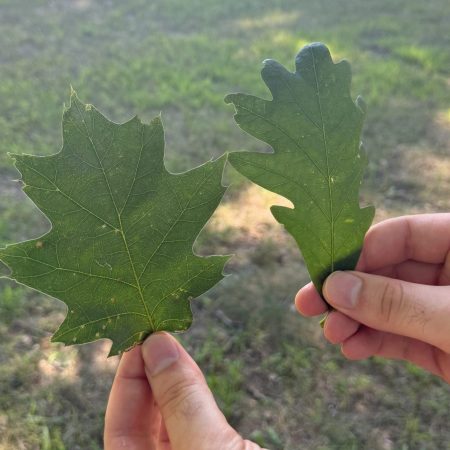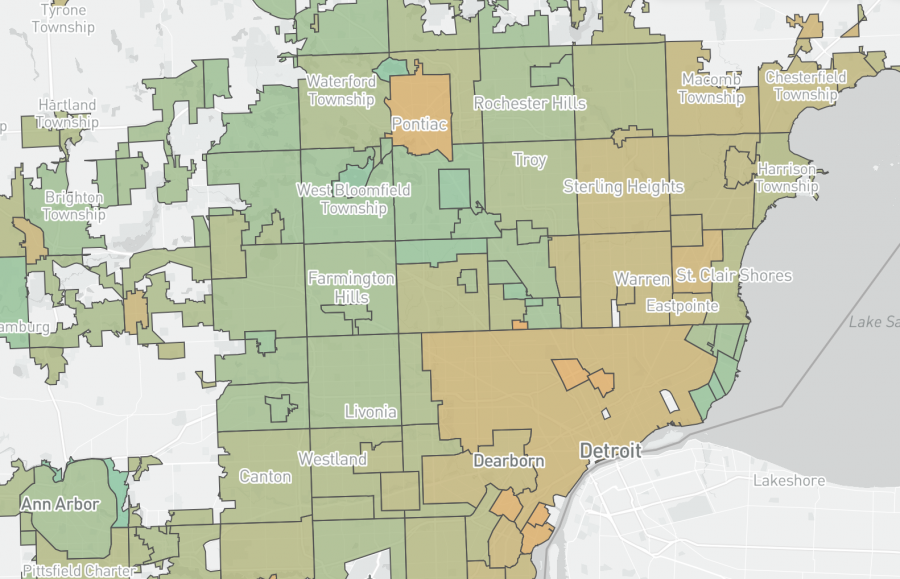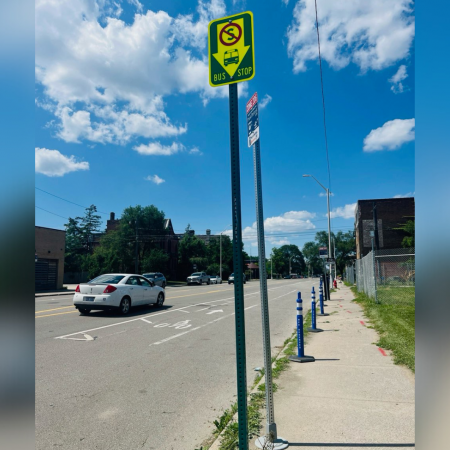Local forestry club looks for clues to Palmer Park’s past — and future — tree canopy
Palmer Park provides a peaceful escape from the noisy, hot summer streets of Detroit.
Spanning roughly 70 acres of forest, the park is home to over one hundred native plant species including treasured, towering oaks — some of which are centuries old. It serves as a sanctuary for wildlife such as pollinator bees, butterflies, birds, deer, and coyotes.
There are many reasons that Palmer Park is one of the most popular urban parks in Detroit, but taking a closer look at the conditions of the tree canopy has one forestry educator concerned for the future.
Southeast Michigan forestry educator Jackson Gorland founded the Michigan Forestry Club to share his passion for trees with the public.
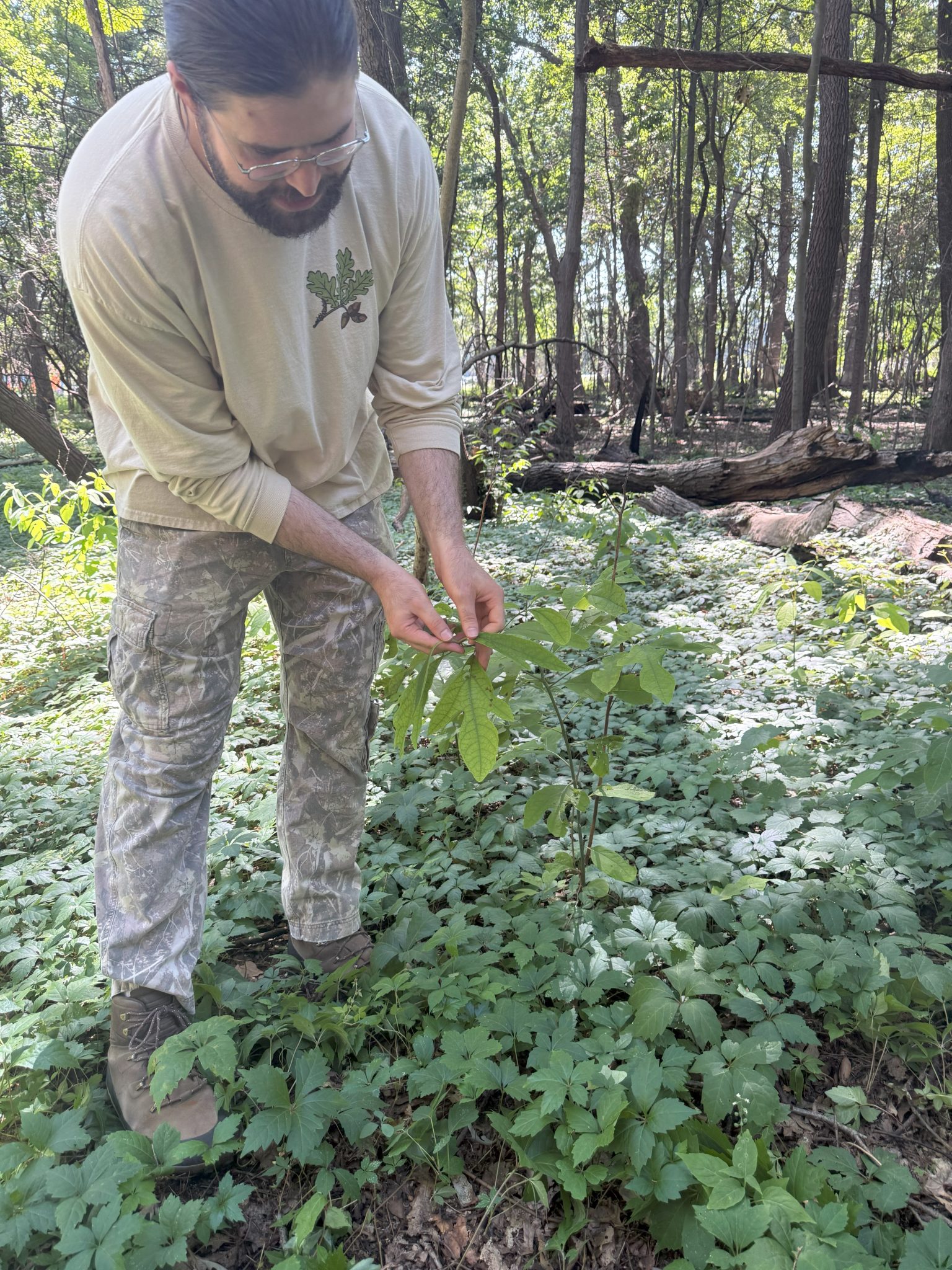
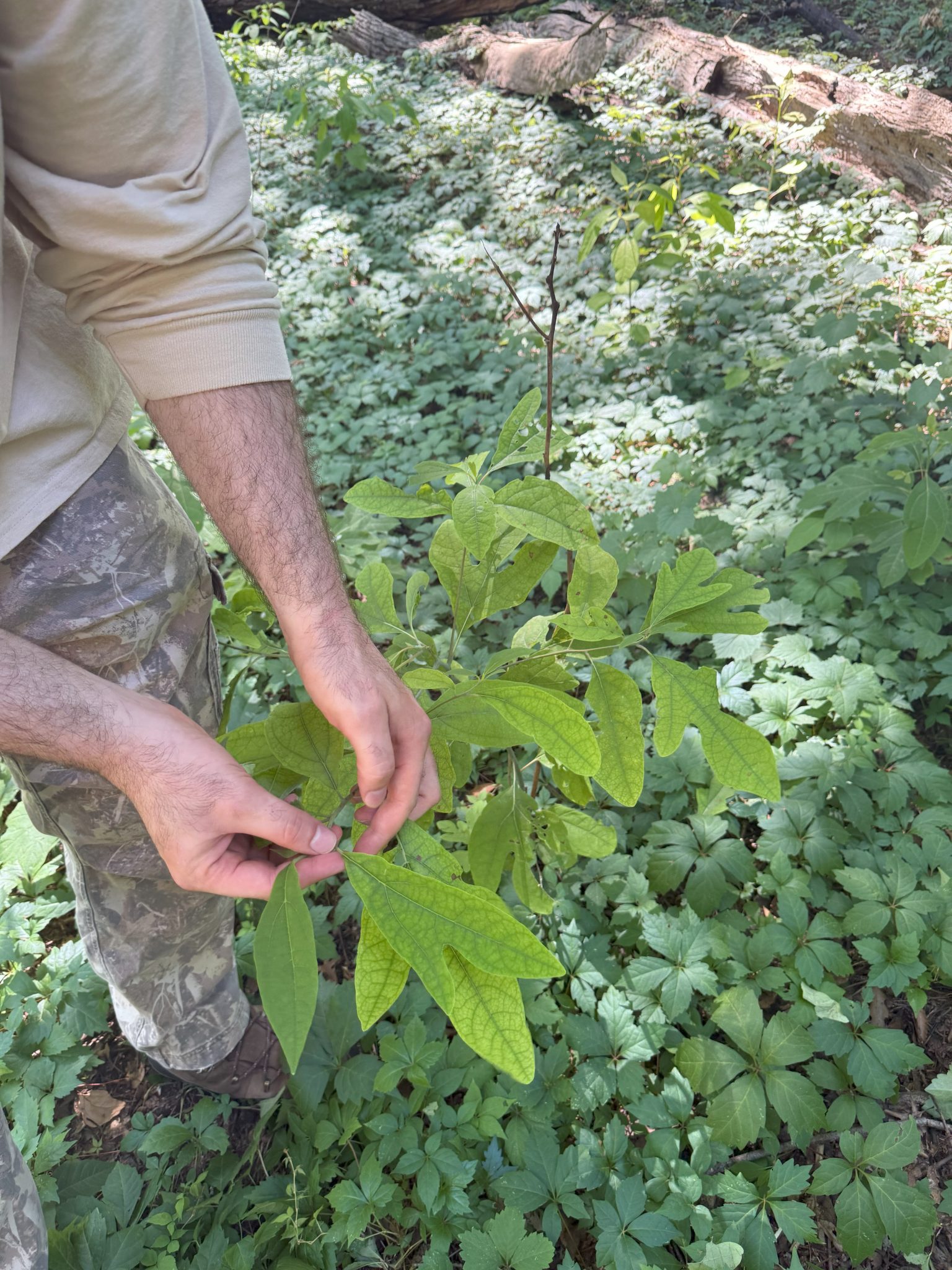
Jackson Gorland identifying saffon in Palmer Park
He recently conducted a forest forensics lesson at Palmer Park on a hot, humid Tuesday where he said that fewer tree species are thriving in the park without human intervention, risking reduced biodiversity.
“Having a diversity of species in there…not just relying on a couple of species that are shade tolerant,” Gorland says. “Absolutely have beech in there, absolutely have sugar maple in… it’s [about] creating a mosaic of different conditions that promotes biodiversity.”
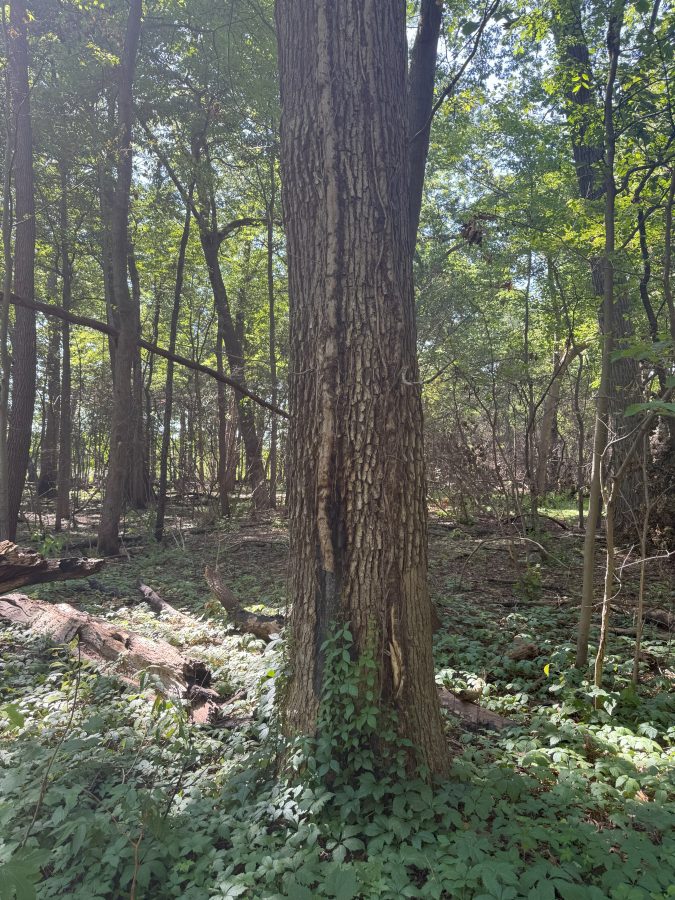
Gorland stresses that hands-on actions are needed to ensure the survival of Palmer Park’s oaks, which require full sunlight. According to
Gorland, shade-tolerant species are crowding them out. There are also more mature oaks than young saplings, a sign that future survival is in jeopardy.
The park recently did a prescribed burn to help young oaks, but further consistent interventions are needed, says Gorland.
The Michigan Forestry Club plans to host additional forest forensics classes across parks in Metro Detroit and Ann Arbor.
This story is part of WDET’s ongoing series, The Detroit Tree Canopy Project.
WDET’s Natalie Albrecht contributed to this report.
Support local journalism.
WDET strives to cover what’s happening in your community. As a public media institution, we maintain our ability to explore the music and culture of our region through independent support from readers like you. If you value WDET as your source of news, music and conversation, please make a gift today.The post Local forestry club looks for clues to Palmer Park’s past — and future — tree canopy appeared first on WDET 101.9 FM.
